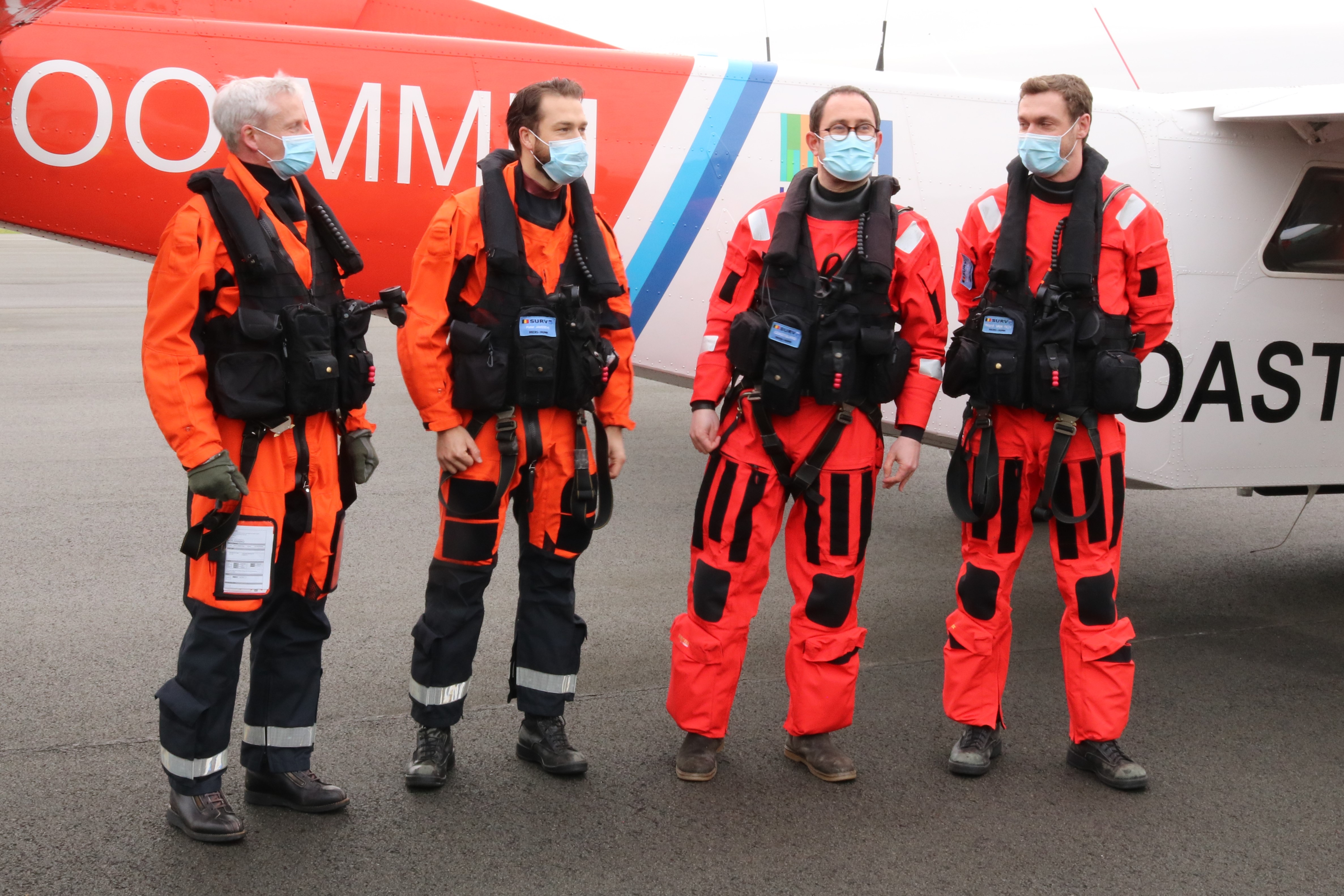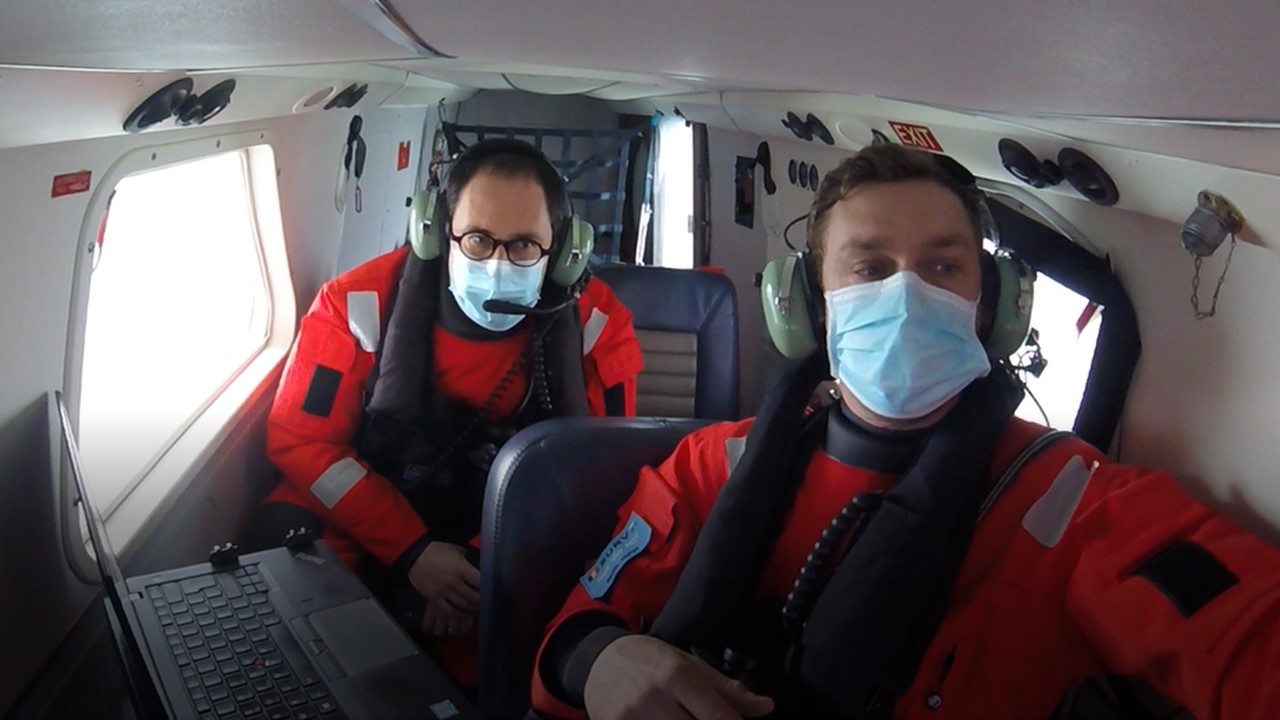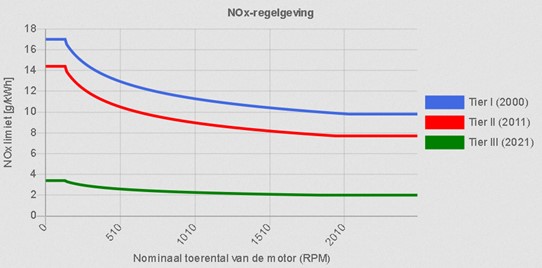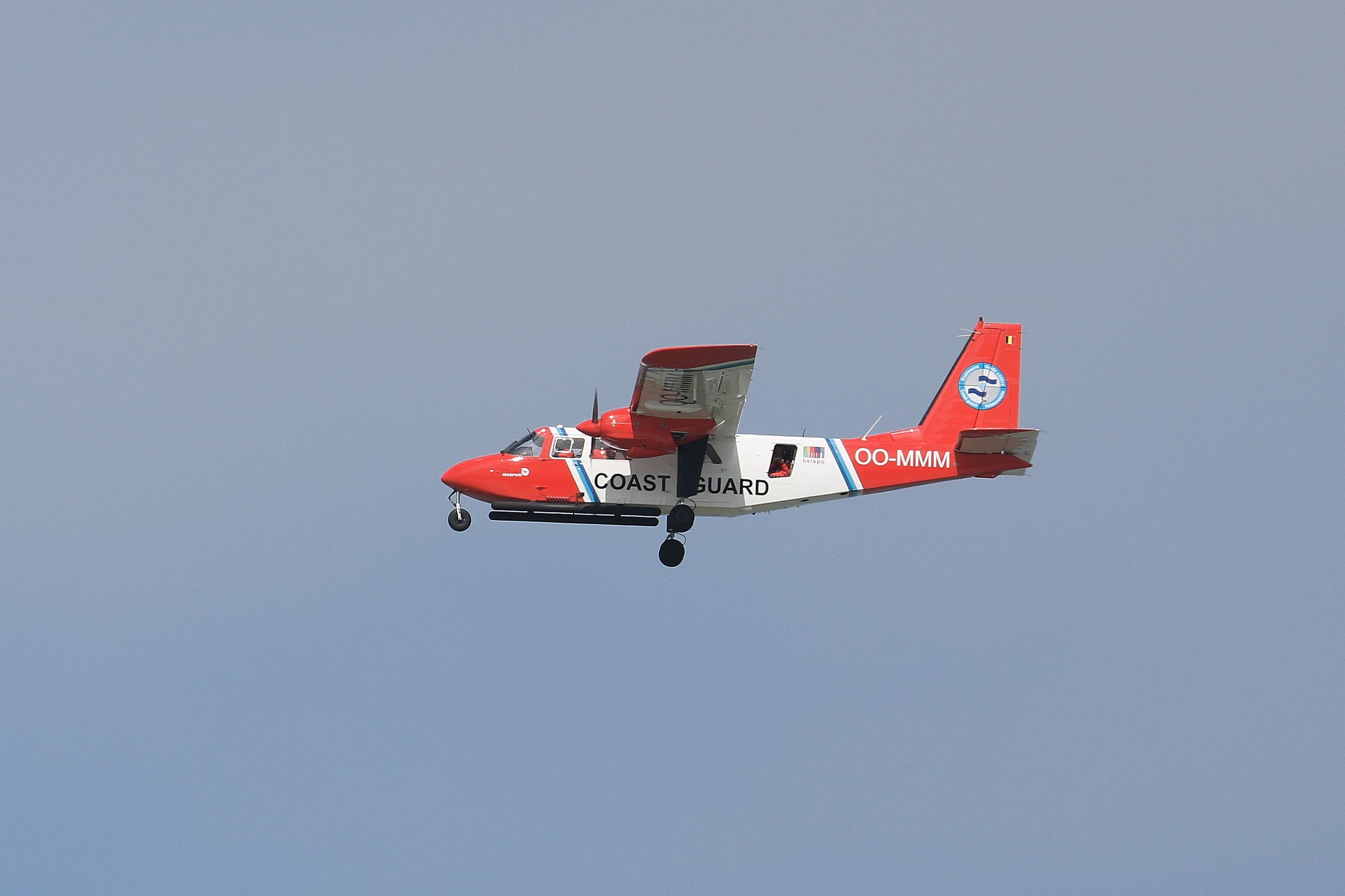On Wednesday 13 January 2021, Deputy Prime Minister and Minister of North Sea Vincent Van Quickenborne checked to what extent ships in the Belgian part of the North Sea comply with the applicable air pollution standards. To this end, he flew along in the Belgian Coast Guard plane. Through the application of a ‘sniffer’ sensor in this aircraft, our country is known as a pioneer in the international fight against air pollution above the sea. The sensor allows polluting components in ship emissions to be measured in the field. Sulphur measurements have been on the programme since 2016, and since 2020 nitrogen compounds can also be detected. With this, Belgium was the first to be ready to monitor above the sea the restrictions on nitrogen emissions from ships that will apply in the North Sea from 1 January 2021.

Emissions of sulphur dioxides (SO2) and nitrogen oxides (NOx) from ships contribute significantly to various health and environmental problems, such as the formation of fine dust, the eutrophication (enrichment by excessive fertilisation) of the living environment (on land and at sea) and the acidification of busy coastal regions. They also give rise to the formation of the greenhouse gas ozone, which not only contributes to climate warming but can also cause significant respiratory problems. Enough reasons to take the fight against the emission of these substances seriously!
Federal attention to the fight against air pollution
The Belgian Coast Guard has already been using a so-called ‘sniffer’ sensor on board MUMM’s aircraft (Britten-Norman Islander, registration number OO-MMM) that is deployed over the sea to check for environmental and nautical violations since 2016. This sensor is an important tool in the fight against air pollution. Belgium was already in the international spotlight with regard to the enforcement of sulphur legislation, and in 2020 expanded its unique expertise to include the measurement of nitrogen compounds in emissions from ships at sea.
“For the purchase of the nitrogen sensor, my predecessor Philippe De Backer made a budget of € 70,000 available in 2019 to the Scientific Service Management Unit of the Mathematical Model of the North Sea (MUMM) of the Royal Belgian Institute of Natural Sciences (RBINS), which both owns and manages the Coast Guard aircraft. Also in my policy, we make the fight against air pollution above the sea a priority and we follow up this dossier closely”, says Minister Van Quickenborne.

When ships with suspicious sulphur or nitrogen levels in their emissions are detected, a report is drawn up and submitted to the port inspection services of the FPS Mobility. They then go on board and subject the ship to an extensive inspection. If irregularities are found, an administrative fine is imposed. By identifying suspect ships on the basis of air monitoring, port inspections and sampling can be carried out in a more targeted way, making them more efficient.
Nitrogen emission control area
On 1 January 2021, an Emission Control Area for nitrogen oxides (NOx) came into force in the North Sea and Baltic Sea. This so-called Nitrogen Emission Control Area (NECA) is part of the International Convention for the Prevention of Pollution from Ships (MARPOL), a convention of the International Maritime Organisation (IMO). Regulation 13 of MARPOL Annex VI defines the NOx emission limits for marine diesel engines as the amount of NOx per unit of engine power (expressed in g NOx per kWh).

Three emission levels are defined based on the date of construction (keel laying) of the ship, the so-called Tiers. Ships built between 2000 and 2011 have to comply with the Tier I standard (maximum 17g NOx/kWh), ships built after 2011 will have to comply with the Tier II standard (maximum 14.4g NOx/kWh). Ships built from 2021 onwards will have to comply with the strictest NOx standards of Tier III (maximum 3.4g NOx/kWh) in the NECA area. Ships built between 1990 and 2000 with a large engine capacity (>5000kW) or a cylinder size larger than 90l are also subject to the Tier I standard. No standard has been set for older ships. The aim is to achieve a gradual reduction of up to 80% in NOx emissions from ships sailing in these and other NECA areas by 2040.
For sulphur, too, there are control areas with strict standards, and Belgian marine waters have been part of the North Sea and Baltic Sea SECA zone (Sulphur Emission Control Area) since 2015. Since the NECA and SECA areas for the North Sea and Baltic Sea correspond geographically, from 2021 onwards we will simply refer to the North Sea and Baltic Sea ECA area (see map).

The NOx sensor
When a restrictive legal framework is not accompanied by adequate control mechanisms, the rules obviously risk remaining a dead letter. Until recently, the NOx regulations could only be enforced by checking the possession of a valid international air pollution prevention certificate, which had to be regarded as prima facie evidence of compliance. Also, the extent to which ships using emission reduction techniques (e.g. a catalytic converter) had activated their equipment in time before entering the ECA, and thus whether they were actually complying with the nitrogen regulations, could recently not be determined with certainty.
The new technology of the nitrogen sensor changes this situation. For the first time, accurate NOx monitoring can be carried out over the sea, and non-compliant ships can be identified with real measurements as proof.

Test results and future perspectives
The NOx sensor was extensively tested during the second half of 2020. “During 25 flights, we were able to successfully determine the nitrogen emissions of no fewer than 394 ships in Belgian waters!” clarifies Ward Van Roy, one of the operators of the Coast Guard aircraft. Of the ships monitored, about half were built between 2000 and 2011, and a third were more recent than 2011. The remaining ships dated from before 2000. “We found that the vast majority of ships monitored that must meet Tier I and Tier II standards from 2021 were already in compliance, but also documented some ships with nitrogen concentrations in their emissions that were more than double the limit. We are curious to see whether this will continue to be the case after the NECA is activated on 1 January 2021.” Van Roy adds.
Minister Van Quickenborne concludes: “Belgium was ready to carry out its enforcement role in nitrogen emissions from 1 January 2021. The first results can be considered a great success and give us confidence that we will be able to collect an enormous amount of information on nitrogen emissions from ships at sea. In the meantime, I have also released funds for the purchase of a sensor that can measure ‘black carbon’ emissions. This will be added to the aircraft’s equipment later in 2021 and will provide results that will help develop the necessary regulations within the IMO. We aim for 55% reduction by 2030 and climate neutrality by 2050. In this way, we are further expanding Belgium’s pioneering role in the fight against air pollution from ship emissions at sea.”
